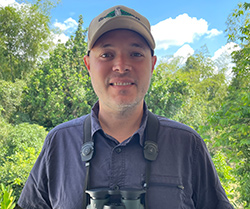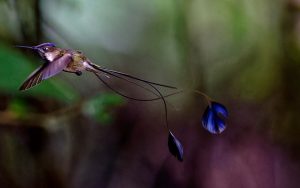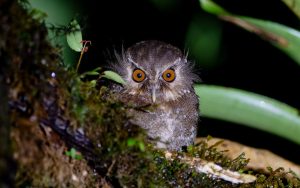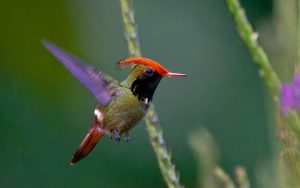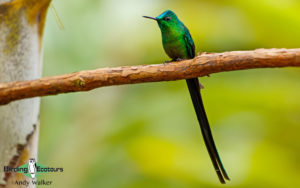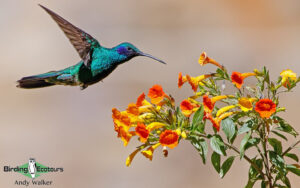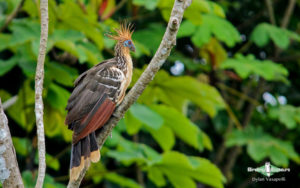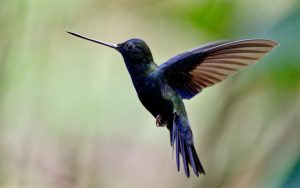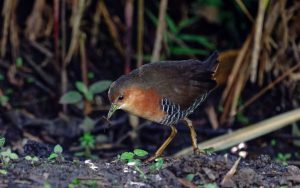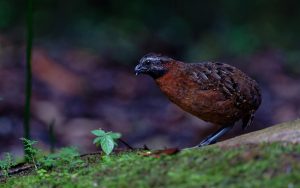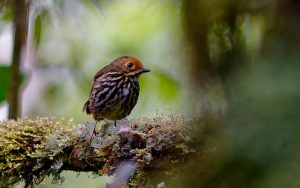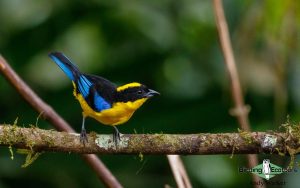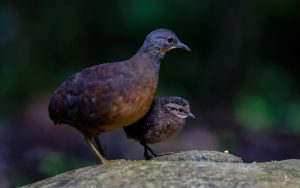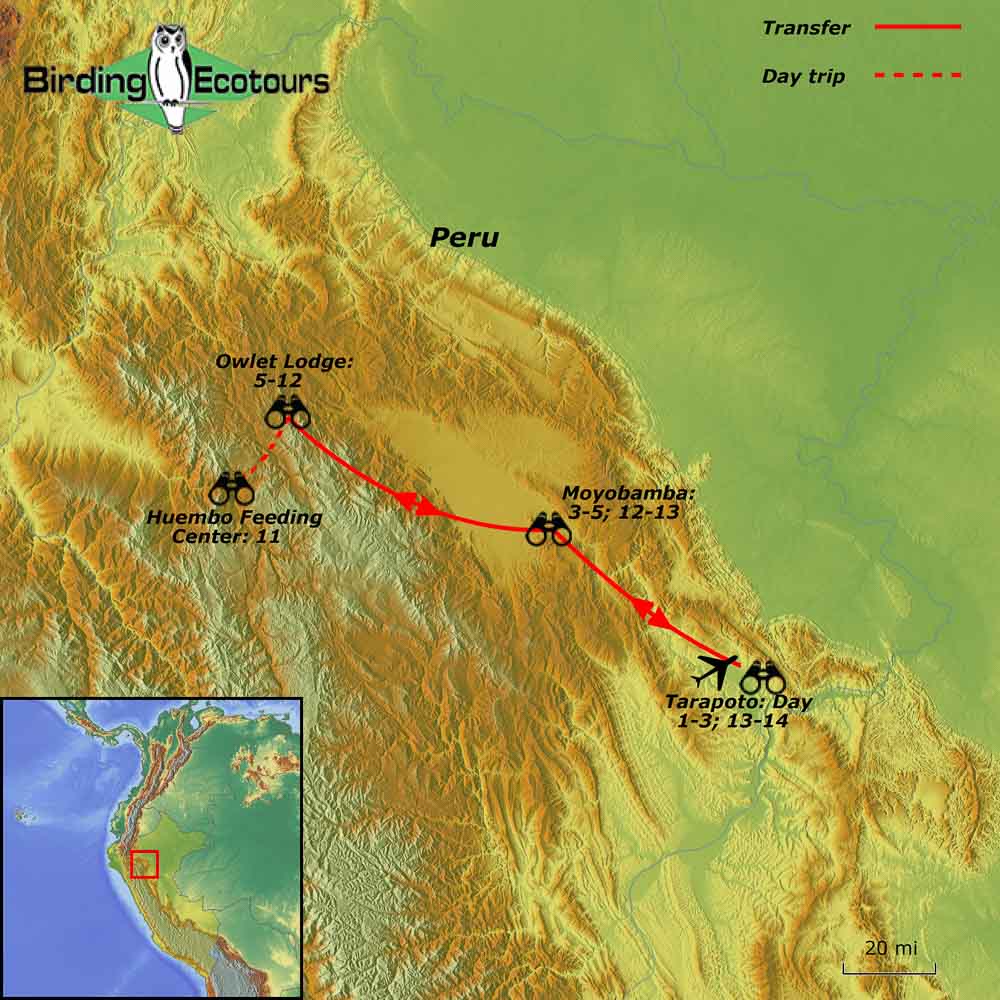Northern Peru: Marvelous Spatuletail, Long-whiskered Owlet & Amazing Feeders
Northern Peru: Marvelous Spatuletail, Long-whiskered Owlet and Amazing Feeders
April 2026/May 2027
This 14-day northern Peru: Marvelous Spatuletail, Long-whiskered Owlet and Amazing Feeders tour takes place along the finest birding route that Peru has to offer, perfect for adventurous birders and photographers alike. Over the last decade a whole series of bird feeding stations have been developed from Pomacochas to Tarapoto. These feeding stations are managed by local people, who have learnt the principles of bird ecotourism and conservation along this birding route. Simply put, this birding circuit surpasses any of the classic birding destinations in the country. We highly recommend this tour to avid birders and enthusiastic bird photographers who want to visit Peru. You will be rewarded with views of amazing birds, including several Peruvian endemics as well as many eastern Andean slope and Upper Amazon specials.
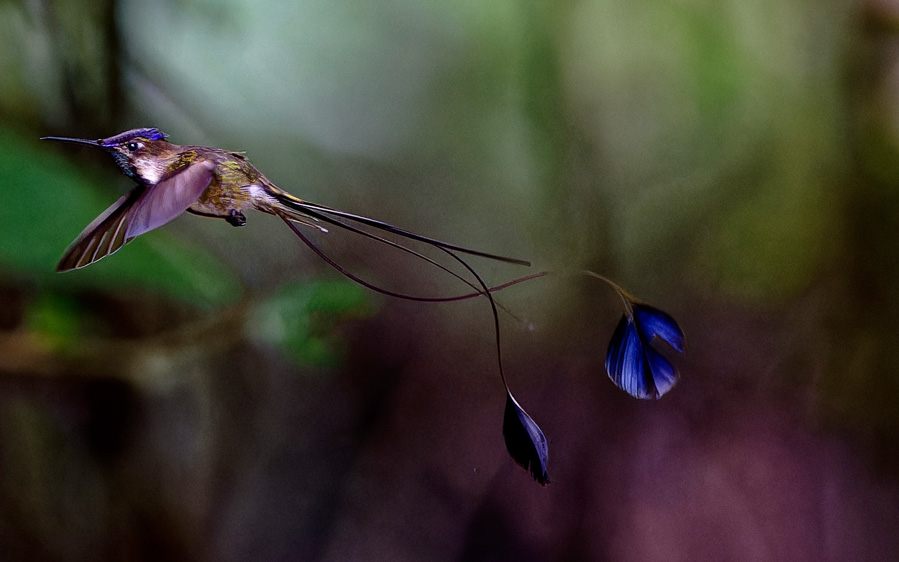
A major highlight of this tour is the endemic Marvelous Spatuletail hummingbird, possibly the most spectacular hummingbird on the planet, and the primary reason why many birders visitor this circuit. The many amazing bird feeders make it one of the top bird feeder routes around, together with the northwest valley of Mindo, Ecuador, and the coffee plantation route in the Andes of Colombia. In addition to Marvelous Spatuletail, you may reach the amazing number of 50 species of hummingbirds in five days! There are also many beautiful tanagers and endemic antpittas, attractive and unknown owls, and a few classic monotypic birds for bird family listers. Additionally, this tour gives you a very good chance of seeing the incredibly rare Long-whiskered Owlet, while staying at the famous Owlet Lodge, where we will be based for an incredible seven-night stay.
Come discover this fabulous Northern Peru birding route with Birding Ecotours, a company with two decades of experience leading birding tours in Peru!
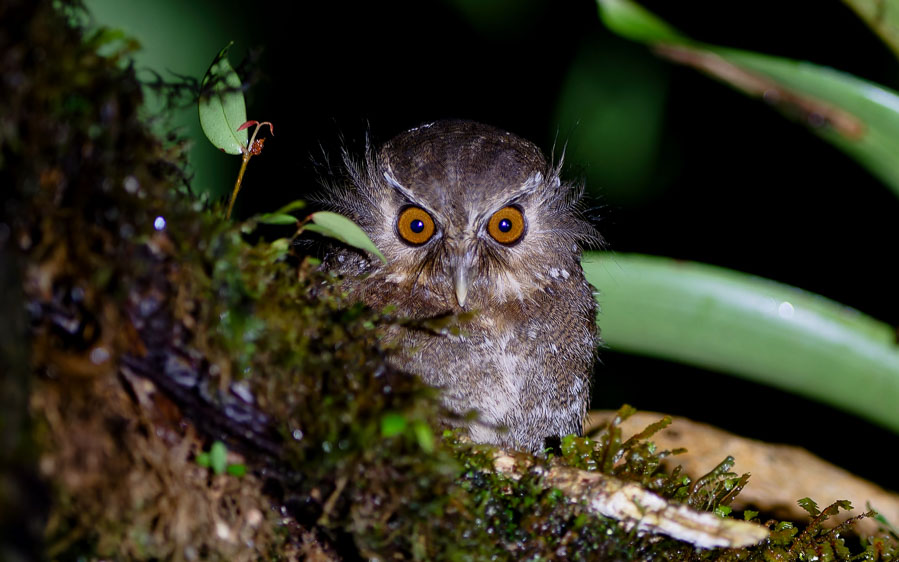
Itinerary (14 days/13 nights)
Day 1. Arrival in Tarapoto
Today you will arrive at the Guillermo del Castillo Airport in the city of Tarapoto, where you will be met by your tour leader and transferred to your hotel.
Overnight: Tarapoto
Day 2. Cordillera Escalera Regional Conservation Area
We will have an early start to explore the buffer zone of the Cordillera Escalera protected zone, visiting the Aconavit private reserve. In this area we will likely have good views of Cliff Flycatcher, White-tipped Swift, Slaty-capped Shrike-Vireo, Slate-colored Grosbeak and, if we are lucky, Military Macaw.
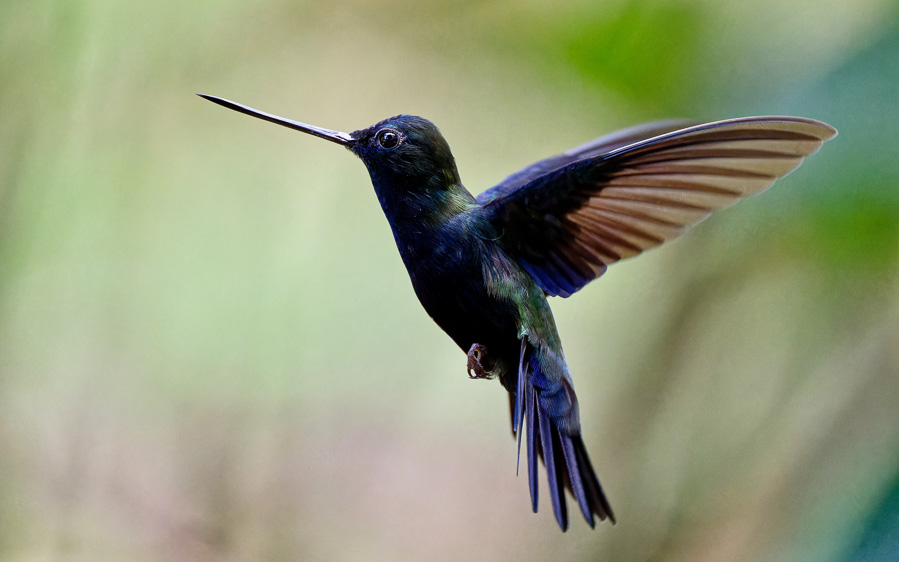
We will arrive at a local hummingbird feeding station, where we should have good views of the endemic Koepcke’s Hermit, Gould’s Jewelfront, Black-throated Brilliant, the uncommon Blue-fronted Lancebill, Golden-tailed Sapphire, Long-billed Hermit, White-necked Jacobin, Grey-breasted Sabrewing and, with luck, Pale-tailed Barbthroat. This pleasant center, located in the upper Amazon forest, also provides great views of Channel-billed Toucan, Violaceous Jay, Magpie Tanager and some understory species such as Carmiol’s Tanager, Golden-headed Manakin, Ruddy Foliage-gleaner, Black-faced Antthrush, White-breasted Wood Wren, Spot-winged Antbird, Green-backed Trogon and, if we are lucky enough to find an army ant swarm, the stunning White-plumed Antbird and Bicolored Antbird.
In the afternoon we will visit the outskirts of Tarapoto to look for Fork-tailed Palm Swift, Gilded Barbet, Bluish-fronted Jacamar, Dusky-headed Parakeet, Swallow-winged Puffbird, Yellow-tufted Woodpecker and the monotypic Hoatzin.
Overnight: Tarapoto
Day 3. Tarapoto birding and transfer to Moyobamba
We will have the first hours of the morning to explore the Tarapoto area again and then, later in the morning, we will transfer to Moyobamba where we will spend the next two nights. En route we will stop to look for the monotypic Oilbird.
We will spend the afternoon visiting the Wakanki feeders, where it is possible to see some new species of hummingbirds, in addition to the ones we will likely have already seen. Here we will have chances for Rufous-crested Coquette, Amethyst Woodstar, Blue-tailed Emerald, White-chinned Sapphire, Black-throated Mango, Black-throated Hermit and Long-billed Starthroat.
At night we will look for Band-bellied Owl if it is vocalizing in the lodge vicinity.
Overnight: Moyobamba
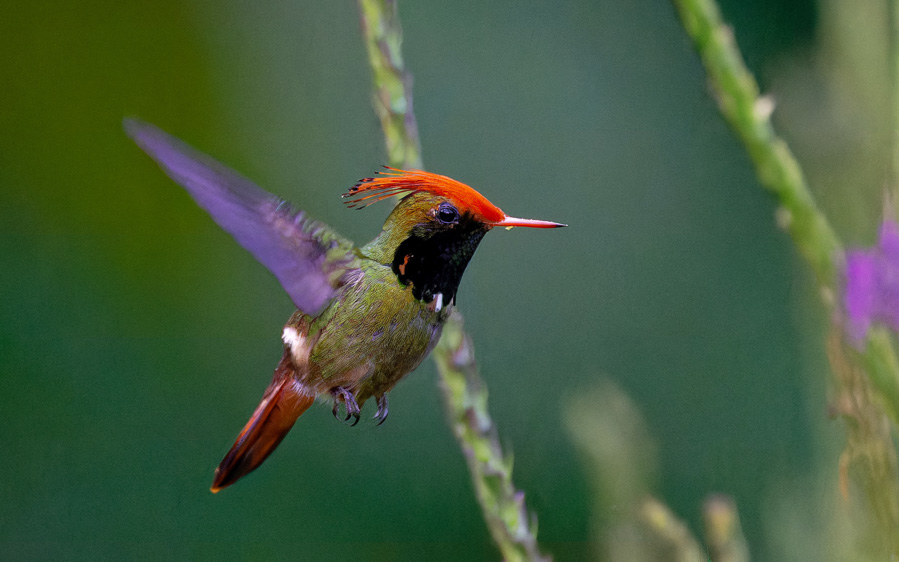
Day 4. Morro de Calzada and Rioja wetlands
Today we will explore the Morro de Calzada, where we will visit a feeding station that offers the chance to see the secretive Rufous-sided Crake. We will also have chances for Golden-collared Toucanet, which is often seen in forest clearings in the reserve. Here, we also hope to find the likes of Green-backed Trogon, Yellow-bellied Tanager, Red-stained Woodpecker, Inambari Woodcreeper, Crimson-crested Woodpecker and, with luck, the recently described Painted Manakin.
We will visit wetlands and rice fields where we hope to find species such as Pale-eyed Blackbird, the monotypic Black-capped Donacobius, Black-billed Seed Finch, Purple Gallinule, Little Woodpecker, Blue Ground Dove, Point-tailed Palmcreeper, the endemic Black-bellied Tanager, Burnished-buff Tanager and, if we are lucky, the secretive Spotted Rail.
Overnight Moyobamba
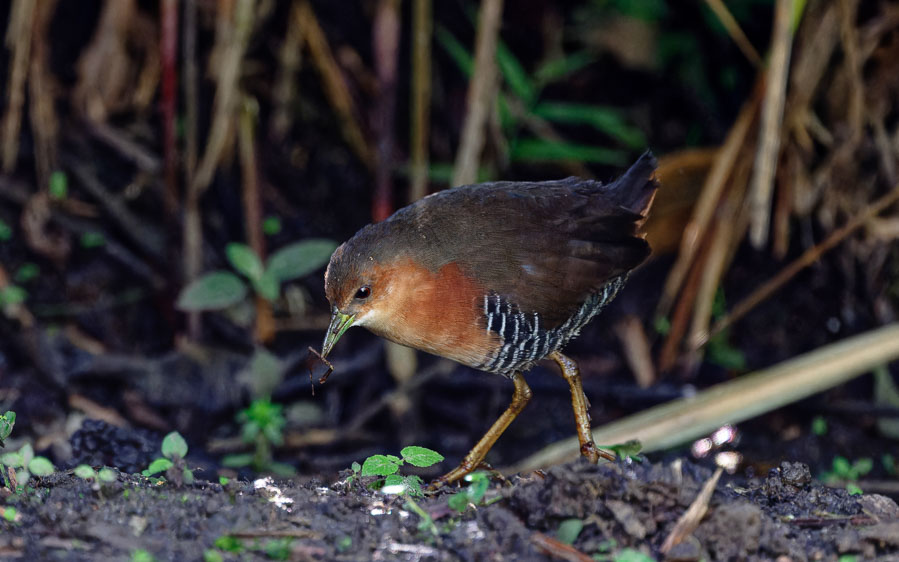
Day 5 Wakanki birding and transfer to Owlet Lodge (Abra Patricia)
Today we have a final morning’s birding at Moyobamba, to look for any missing species which may include Blue Dacnis, Green Honeycreeper, the endemic Mishana Tyrannulet, Lafresnaye’s Piculet, the secretive Semicollared Hawk, Cinereous-breasted Spinetail, Blue-winged Mountain Tanager, White-crowned Manakin, Yellow-crested Tanager, Forest Elaenia, Peruvian Warbling Antbird and the endemic, little-known and Endangered Ash-throated Antwren.
Next, we head towards Abra Patricia and visit some feeding stations on the way, which could attract Wire-crested Thorntail. In the afternoon we will visit the Nieva private reserve where we should get views of the endemic Ochre-fronted Antpitta and Rusty-tinged Antpitta at the feeders.
Later we will transfer to Owlet Lodge where, over the next few nights, we will look for Long-whiskered Owlet (which was once considered one of the rarest birds in the world), White-throated Screech Owl, Cinnamon Screech Owl and Rufous-bellied Nighthawk.
Overnight: Owlet Lodge
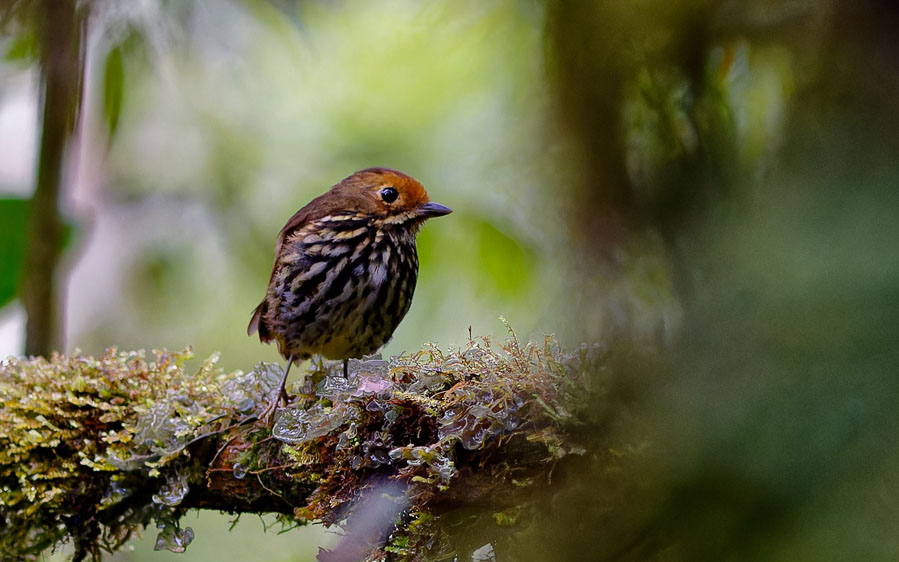
Days 6-10. Owlet Lodge
We will spend the next four days exploring the Abra Patricia area, using Owlet Lodge as our base. We will have time to explore the lodge’s trails and different forest sectors, looking for classic montane forest specials such as Grass-green Tanager, the endemic Yellow-scarfed Tanager, Masked Flowerpiercer, the endemic Lulu’s Tody-Flycatcher, Green-and-black Fruiteater, Black-throated Tody-Tyrant, Variable Antshrike, Russet-crowned Warbler, Grey-breasted Wood Wren, Rufous Spinetail, the endemic Rufous-vented Tapaculo, Rufous-headed Pygmy Tyrant, Spotted Barbtail, Blue-winged Mountain Tanager, Streaked Tuftedcheek, Pearled Treerunner, White-banded Tyrannulet, Capped Conebill, and Strong-billed, Montane and Olive-backed Woodcreepers.
The hummingbird feeders of the lodge usually provide views of Emerald-bellied Puffleg, Bronzy Inca, Collared Inca, Fawn-breasted Brilliant, White-bellied Woodstar, Long-tailed Sylph and Chestnut-breasted Coronet.
The lodge has set up new feeding stations in recent years, where it is possible to see the endemic Chestnut Antpitta as well as Rusty-tinged Antpitta, Rufous-breasted Wood Quail, White-throated Quail-Dove and hopefully the elusive duo of Brown and Hooded Tinamous.
Other birds at lower elevations include the range-restricted Bar-winged Wood Wren, Cinnamon-breasted Tody-Tyrant, Crimson-mantled Woodpecker, Olive-chested Flycatcher, Blue-naped Chlorophonia, Flame-faced Tanager and Golden-eyed Flowerpiercer.
Overnight: Owlet Lodge
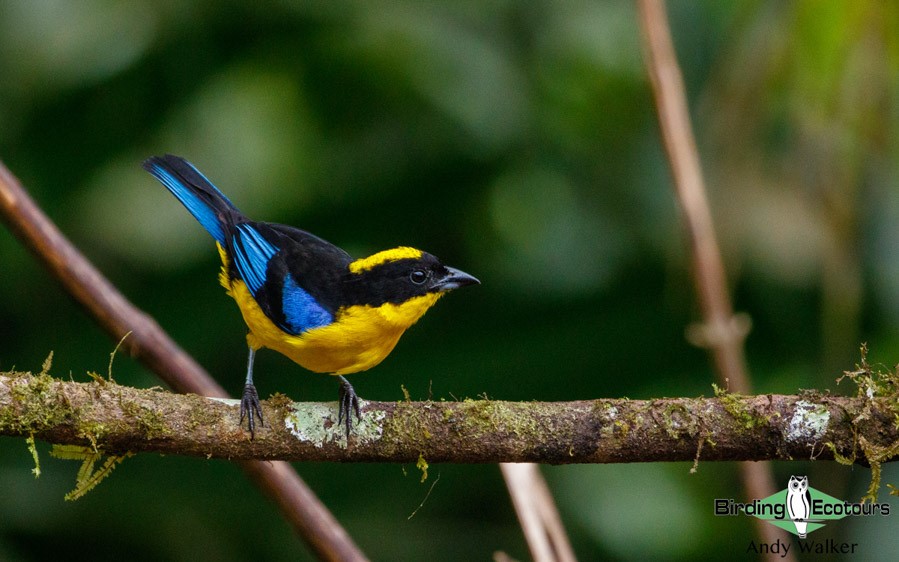
Day 11. Day trip for Marvelous Spatuletail
This morning we will drive to the famous Huembo feeding center where we will enjoy the feeders, hopefully with amazing views of the sought-after Marvelous Spatuletail (perhaps the most beautiful hummingbird in the world), along with Little Woodstar, Violet-fronted Brilliant, Bronzy Inca, White-bellied Woodstar, Andean Emerald, Chestnut-breasted Coronet and abundant Sparkling and Lesser Violetears.
Here, we also have good chances of seeing Black-throated Toucanet as well as Speckle-breasted Wren, Chestnut-capped Brushfinch, Northern White-crowned Tapaculo, Sierran Elaenia, Buff-browed Foliage-gleaner and Azara’s Spinetail.
We will likely spend most of the day trying to get great views (and photos) of the flashy Marvelous Spatuletail at Huembo and in the surrounding forest.
Overnight: Owlet Lodge
Day 12. Arena Blanca Reserve and transfer to Moyobamba
A predawn start will take us to visit the Reserva Arena Blanca, where we will visit the feeders which attract the shy Rufous-breasted Wood Quail, Cinereous and Little Tinamous, Orange-billed Sparrow, Grey-cowled Wood Rail and Ruddy Quail-Dove. The hummingbird feeders here attract Blue-fronted Lancebill, Amethyst Woodstar, Long-billed Starthroat, Many-spotted Hummingbird and the handsome and most-wanted Wire-crested Thorntail.
Other interesting species in the reserve include Golden-collared Toucanet, Inambari Woodcreeper, Dusky Spinetail, Red-billed Tyrannulet, Scaled Pigeon, Yellow-browed Sparrow, Long-tailed Tyrant, Magpie Tanager, Chestnut-bellied Seed Finch and hopefully the secretive Uniform Crake.
Later we will continue our journey to Moyobamba in the Amazonian foothills.
Overnight: Moyobamba
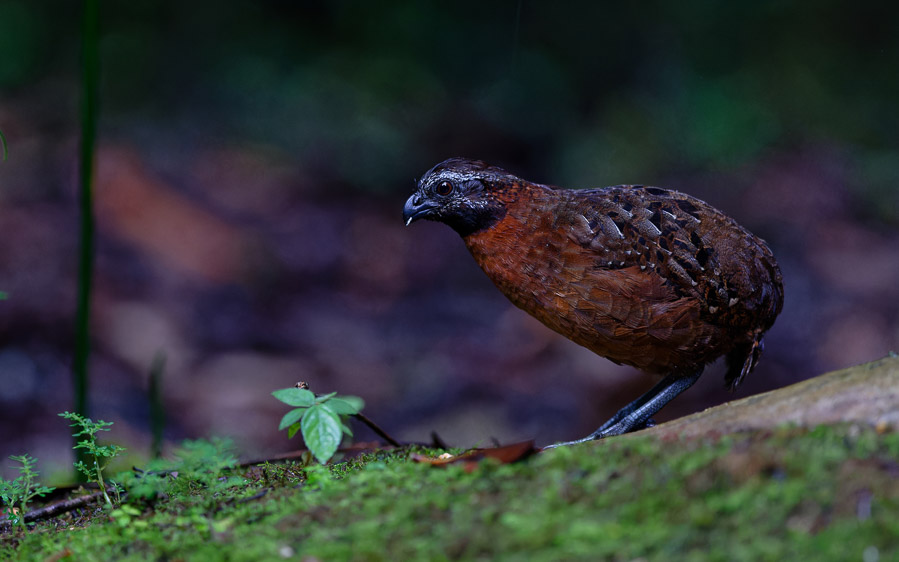
Day 13. Santa Elena and transfer to Tarapoto
Early in the morning we will explore the Rio Negro and the Santa Elena wetlands in search of aquatic species such as the most-wanted Sungrebe. Other birds might include Spangled Cotinga, Band-tailed Antbird, Orange-backed Troupial, Buff-throated Woodcreeper, Great Antshrike, Green-and-rufous Kingfisher and Cocoi Heron. The reserve also offers chances for other exciting wildlife like the secretive Neotropical Otter, Andean Saddle-backed Tamarin and Large-headed Capuchin. Furthermore, the area may provide chances for the endemic San Martin Titi.
Later we will be transferred to Tarapoto, where we will celebrate the end of our exciting northern Peru tour.
Overnight: Tarapoto
Day 14. Transfer to the airport and flight home
This morning you will be transferred to the Tarapoto airport to connect with your domestic and international flights.
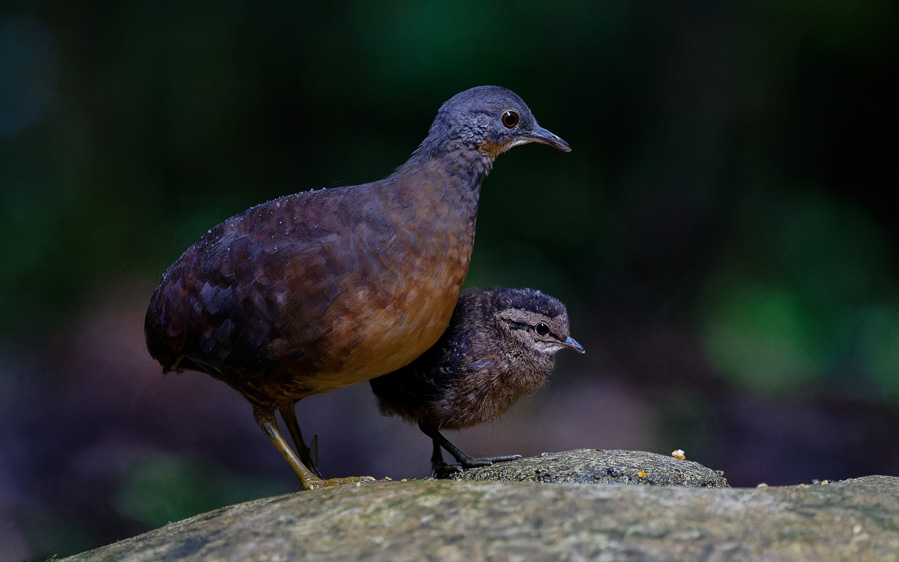
Please note that the itinerary cannot be guaranteed as it is only a rough guide and can be changed (usually slightly) due to factors such as availability of accommodation, updated information on the state of accommodation, roads, or birding sites, the discretion of the guides and other factors. In addition, we sometimes have to use a different international guide from the one advertised due to tour scheduling.
Download ItineraryGENERAL INFORMATION ABOUT PERU CAN BE READ HERE.

